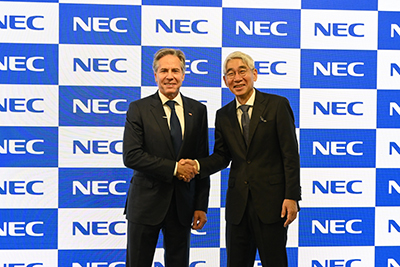Will Open RAN Politics Solve Open RAN Economics?

Foreign Ministers of the Quadrilateral Security Dialogue (Quad), a strategic dialogue between the governments of Japan, who established the network in 2007, Australia, India and the USA, have used a joint statement to reaffirm their commitment to promoting Open RAN in the APAC region.
Released to coincide with a meeting of the group’s four foreign secretaries in Tokyo this week, the governments stated they will “continue to advance the development of a trusted, secure and robust telecommunications network, and promote supplier diversification, Open Radio Access Networks (Open RAN) and joint projects”
Against a backdrop of increasing tensions in the Indian and Pacific Oceans, the Quad is seeking to enhance regional security by deepening diplomatic ties through strategic cooperation. In reiterating its commitment to respecting and upholding the rules set out by the UN Charter on the Law of the Seas (UNCLOS) and without naming China, the Quad condemned “unilateral actions that seek to change the status quo by force or coercion” and expressed its “serious concern about the militarization of disputed features, and coercive and intimidating maneuvers in the South China Sea”.
US Foreign Secretary Blinken also visited NEC’s Future Creation Hub during his visit to Tokyo where he praised the company’s and the Japanese government’s support for Open RAN. “So this is a critical part of American diplomacy,” said Secretary Blinken in his address to the press, “it’s a critical part of the work that we do with Japan, and of course you see it playing out in other places – Japan and the United States working together with the Philippines, for example, on testing out and actually commercializing the Open RAN system.”
Following the trade restrictions it placed on Huawei, ZTE and other Chinese manufacturers, the US government has championed Open RAN both at home and abroad, but particularly in the APAC region. In this context, Open RAN is as much a platform for technology innovation as a diplomatic tool with which to exert pressure on China by attempting to reshape global markets.
Through its foreign aid (USAID) and foreign trade and development (USTDA) divisions, the US government is funding several Open RAN initiatives in China’s neighbouring countries. In Indonesia the USTDA is partnering with the government on a feasibility study to connect over a thousand rural villages through Open RAN. In the Philippines, USAID funded the launch of an Open RAN Academy in 2022 and an Open RAN lab in Spring of this year. Along with Japan, the US government is funding Open RAN field trials to the tune of $17 million in the Philippines along with several other related initiatives. More recently the US worked with the Quad to bring Open RAN to the Western Pacific Island nation of Palau.
Elsewhere in the Indo Pacific region, the USTDA recently announced it was working with Kenya to boost semiconductor manufacturing in the country. Within the broader context of America’s diplomatic and trade goals this can be seen as a new approach to challenging China’s influence in the Global South, especially as it relates to critical communications and ICT infrastructure, cybersecurity, semiconductor manufacturing and the complex supply chains needed to support these industries.
And the US is ramping up these efforts, at least until a new administration comes in. The State, Foreign Operations, and Related Programs Fiscal Year 2025 Appropriations Bill has just been passed which allocates a further $12.2 billion in funding to USAID to enhance diplomatic security, information technology, and cybersecurity in its missions across the globe. The challenge Open RAN will need to overcome if the US is to achieve its goals remains the same however. Ultimately many service providers in the global South turn to Chinese vendors because of cost considerations. Cost effectiveness and scalability have driven the massive growth in the connectivity we’ve witnessed over the past decade and Open RAN needs to be able to deliver on similar promises. Until then, other considerations remain secondary.



